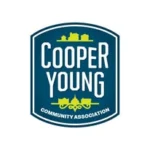In the 1970s, local preservationists and authors Peggy Jemison and Virginia Dunaway embarked on a project for the Metropolitan Interfaith Association (MIFA) to document the histories of eight historic Memphis neighborhoods, including Cooper-Young. Published in 1980, their work was the first real history of the area, which at the time was in a state of decay.
Thirty years later, with the neighborhood having undergone a dramatic transformation, writers Lisa Lumb and Jim Kovarik updated the earlier work for the book Cooper-Young: A Community at Works: A History, published by the Cooper-Young Community Association.
In the latest in a series of excerpts from the book, this month we explore how the hard times of the decade from 1930-1940 shaped the neighborhood.
Like the rest of the nation, the Depression hit Cooper-Young hard. But savvy politicians like Boss Crump parlayed their share of federal relief money into badly needed infrastructure like bridges and roads in Memphis. Public works included the new construction of Riverside Drive in 1935. Crump’s nine-year-old daughter cut the ribbon to open the road, which cost $1 million to build. It was considered, for a time, to be the most expensive highway in the country. Projects like this put Memphians to work and included the stabilization of the bluff below the drive, previously an unsightly garbage dump. Another major project matched local bequests with federal money for the construction of John Gaston City Hospital in 1934.
Closer to CY, an unpopular regulation during the Depression decreed that married teachers whose husbands were employed could not work at Peabody School. The rule generated indignant petitions from residents protesting this unfair practice. Home construction slowed but continued over the decade. By 1940m 90 percent of houses in the neighborhood had been built.
Reflecting a common pattern, new generations started families but stayed put in CY. In 1937, James Francis McCallen, who had grown up on Oliver Avenue, built a house at 1914 Evelyn (the corner of Barksdale and Evelyn) for his young family. Francis’ son, Jim McCallen, recalled playing in the open field behind the house and the railroad tracks, a popular site for hobo camps.
During the Depression, men rode the rails looking for work and would jump off and set up camp at convenient locations. Jim and his brother Tom enjoyed visiting with the hobos, some of them educated gentlemen who had fallen on hard times. Katherine McCallen Cain’s aunt, who lived on York, remembered the hobos lining up to beg, respectfully, at their back door from the nearby train stops whenever she fried chicken.
Despite the tough times, people continued to shop and play in the neighborhood. Joann Howard Takacs remembered living in CY, where her dad was a salesman at the Walsh Furniture store (located in the current Cowork space at 902 Cooper). For a treat, whe and her brother enjoyed an outing at the amusement park at the Fairgrounds. They both got a nickel to spend on rides. The CY commercial corridor still offered everything a person could need at “astonishing low prices,” according to a 1932 newspaper article about the business district.
But the hard times led to even more exploitation of the poor than usual, and CY was not exempt. The infamous Georgia Tann was snatching children out of Midtown for the Tennessee Children’s Home Society that stole and sold the children of poor families. With cooperation from a female juvenile court judge and other officials, Tann removed children from the care of poor, single mothers and divorcees and literally sold them to out-of-state families eager to adopt — leaving no way to trace the children.
A life-long resident of CY, Gloria Ingram, was one of the victims. Her sharecropper parents from Henderson, Tennessee, placed her as an infant with Tann’s agency, with the intention of returning for her after the harvest. Little did they know that they had left their daughter at what amounted to little more than a baby factory. Because she had a lazy eye and leg braces, she was not adopted for some time, and in the meantime she was barely cared for. By the time her parents returned to pick her up nearly a year later, she had been moved to another home. She was eventually reunited with members of her birth family, but this early neglect haunted her all her life.
Another CY resident, Grace Gribble of 1048 Meda, was widowed when her husband a fireman, was electrocuted at the Southern Railyard, leaving her to raise six children. She signed documents that she thought secured free health care for her children; instead, she had signed away three of her younger children for adoption. Despite taking her plea to court, she was denied the right to get her children back. The court cited her poverty as a good reason why they should not be returned to her.
Times got even tougher when the floods of 1937 swamped the hardscrabble conditions of the Depression. Ten of thousands of refugees from Arkansas, Mississippi, and Tennessee poured into Memphis for help from flooded lowlands. A tent city was set up at the Fairgrounds (relative high ground) and many local schools, including Peabody, Fairview, and Central, were used as hosptials and refugee camps for these displaced people. Helen Gilchrist Marshall Shea, an Evelyn resident and Fairview student, vividly remembered her school being closed down for the flood victims. CY lifelong resident Virginia Weber recalled that her father, Charles Gates, a Shelby County trustee at the time, supervised groups at Peabody School. The neighborhood gained a reputation as a sheltering place for its responsive institutions and helpful residents.



